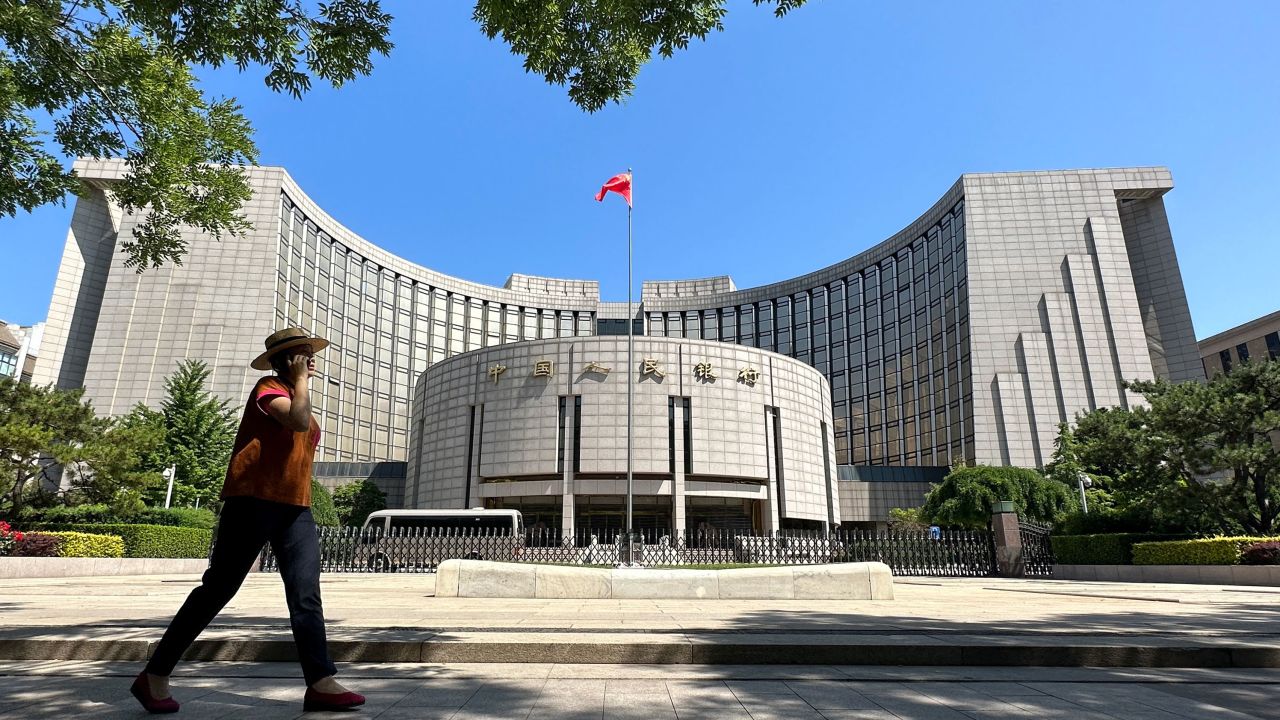Hong Kong
CNN
—
China surprised investors by deciding not to cut a key interest rate that affects mortgages, which economists say will make it harder to restore confidence in the country’s troubled real estate sector, which has dragged down prospects for the world’s second-largest economy.
The People’s Bank of China (PBOC) kept its five-year lending prime rate (LPR) at 4.2%. is on hold On Monday, its one-year lending prime rate was cut by 10 basis points to 3.45% from 3.55%.
A cut in the one-year rate was widely expected, but no action in the five-year rate. All analysts polled by Reuters had forecast the five-year rate, which serves as the benchmark mortgage rate, to be cut by at least 15 basis points.
The effect is “underwhelming,” Julian Evans-Pritchard and Zhichun Huang of Capital Economics wrote in a Monday research note.
“In isolation, the latest round of cuts is too small to have a major impact,” the Chinese economists wrote. “[This] This reinforces our view that the PBOC is unlikely to accept the very large rate cuts required to revive credit demand.
The LPR sets the interest charged by commercial banks to their best customers and serves as a benchmark for providing home and corporate loans. The one-year rate affects most new and outstanding loans, while the five-year rate affects the cost of long-term loans such as mortgages.
Lowering the interest rate will reduce the cost of borrowing for borrowers or interest.
Stocks in Hong Kong and mainland China and the Chinese currency weakened on the news. Hong Cheng of Hong Kong
(HSI) It traded 1.5% lower, falling deeper into a bear market, while the Shanghai Composite
(SHCOMP) 0.5% down.
The Chinese yuan has lost nearly 6% against the dollar so far this year, as concerns swirled about the future of the Chinese economy, which reported another month of lackluster economic data last week.
Besides a crisis in the property sector, China is struggling with deflation, weak exports and record unemployment among the young.
Economists were expecting further cuts in the lending prime rate after China surprisingly cut another rate, its medium-term lending facility (MLF), last week. It shed 15 basis points to 2.5% on Tuesday.
The lending prime rate is pegged to the MLF, so new cuts are “pretty much a given” on Monday, Capital Economics said.
Even if the PBOC met expectations by cutting rates as much as expected, it would have been “enough to boost growth,” Goldman Sachs analysts said in a research note.

The central bank on Sunday said it had held a meeting with state-owned commercial banks, state-owned enterprises and other institutions over the weekend.
During the meeting, China’s economic recovery was described as waves and part of a “zigzag” process. Joint Statement with financial and securities regulators.
“Major financial institutions should take the initiative to operate and increase lending, and large state-owned banks should continue to play a supporting role,” they said.
“We need to focus on maintaining a steady pace of credit growth, properly managing credit fluctuations, and improving the stability of financial support for the real economy.”
Monday’s announcement adds to concerns about the state of China’s economy.
On Monday, UBS cut its economic forecast for the country, now expecting growth of 4.8% for 2023 and 4.2% for 2024. This compares with earlier projections of 5.2% and 5% respectively.
The downgrade was “in light of a deep and prolonged asset slump and weakening global demand,” China economist Tao Wang said in a research note.
“China’s economic growth has slowed since April as the asset slump deepened. Government policy support is lower than indicated earlier this year, and lower than we expected.
China tried to find support with the PBOC Reduces both LPR rates June for the first time since August 2022. The economy was hit by renewed Covid lockdowns and a deep asset slump.
But after getting off to a solid start earlier in the year, the economic picture has darkened. A slowdown was recorded in various sectors of the economy in July and the pressure on the broader real estate market worsened.
Last week, official data showed consumer spending, factory production and investment in fixed assets fell further in July than a year ago. Meanwhile, Chinese exports suffered their biggest drop in more than three years that month.
Chinese markets were also weighed last week by “rising concerns about the housing market and its contagion in the financial economy,” Goldman Sachs analysts noted in a research note on Saturday.
Investors are concerned about the multibillion-dollar debt burden of Country Garden, one of China’s top property developers. Recently, the company missed some payments and suspended trading of offshore bonds, contributing to default fears.
Last week, Evergrande, another troubled Chinese developer, filed for bankruptcy in the United States, adding to jitters about a broader crisis. This means it will be even harder for policymakers to create a turnaround.
“Reviving demand will take much larger rate cuts or regulatory action to effectively restore confidence in the housing market,” Capital Economics said on Monday.
“The big picture is that the PBOC’s approach to monetary policy is of limited use in the current environment and, at the very least, may not be sufficient to put a floor underneath growth.”